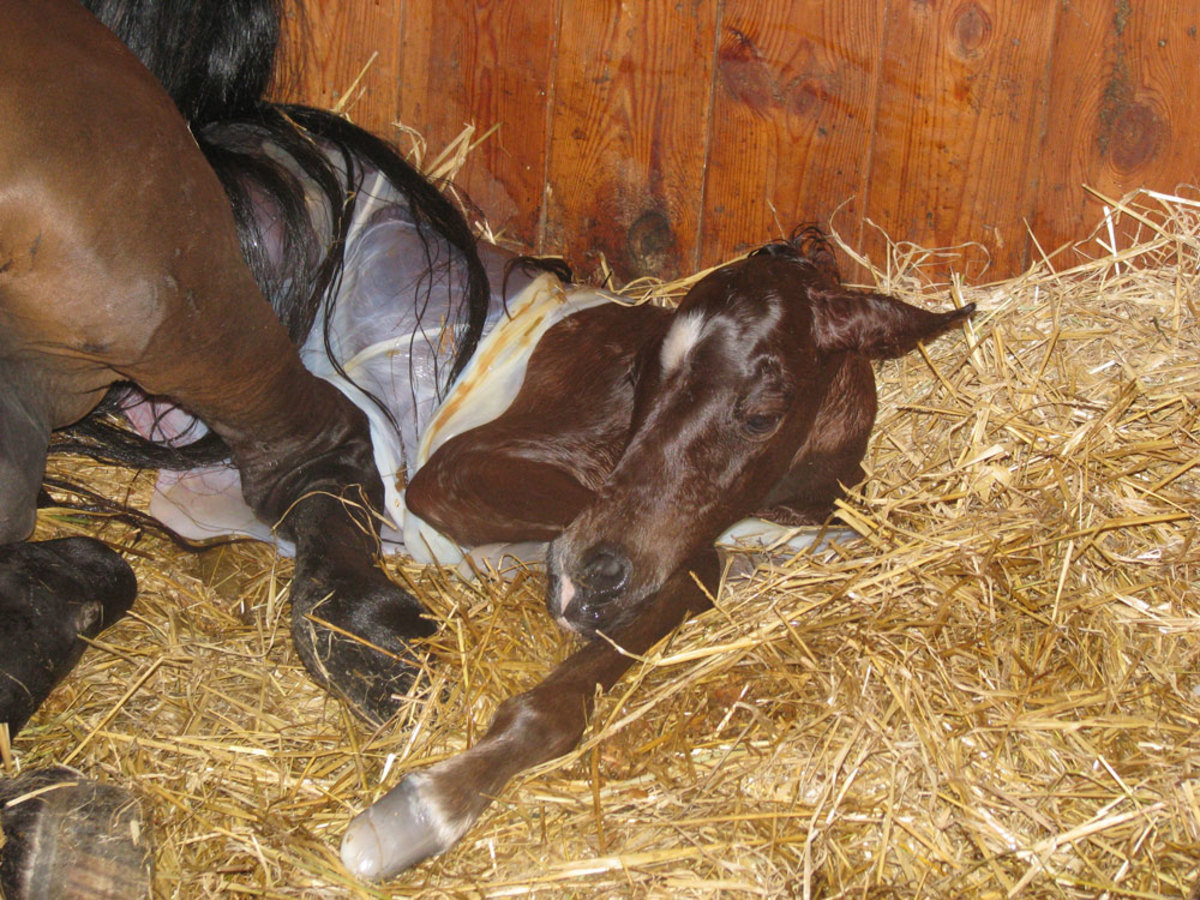
Mares can reproduce without actually carrying the foal themselves by transfer of an embryo either produced by the mare or by a newer method called ICSI (pronounced ick see; intracytoplasmic sperm injection). ICSI involves collecting oocytes directly from follicles (even immature ones) and inseminating them in the laboratory to produce blastocysts (i.e., transferrable embryos). Those “blasts” can either be frozen for future use or transferred to a recipient mare to efficiently produce a foal without interrupting the “mother’s” training and competition schedule.
Katrin Hinrichs, DVM, PhD, DACT, chair of the Department of Clinical Studies, New Bolton Center, at the University of Pennsylvania’s School of Veterinary Medicine, described the procedure and outcomes during her virtual presentation for the First Pro-ISER (International Symposium on Equine Reproduction) Lecture Series in Equine Reproduction held October 23-24, 2020.
According to Hinrichs, there are really only a few key steps involved in producing embryos via ICSI:
- Oocyte recovery from donor mares
- Maturation of the oocytes in the laboratory
- Sperm injection (the actual ICSI process)
- Embryo culture to the blastocyst stage; and
- Embryo transfer.
Hinrichs said that all the primary practitioner needs to do is collect the oocytes and send them to the lab. Then, the practitioner receives the viable blastocysts from the lab and transfers them into recipient mares using standard protocols.
Simple, right?
Overall, yes, but there is a learning curve associated with oocyte recovery.
The procedure (trans-vaginal ultrasound-guided follicle aspiration or TVA) requires three people, and this process is not completely benign.
“The aspiration of oocytes from ovarian follicles is an invasive procedure,” said Hinrichs. “It can cause rectal bleeding due to palpation and manipulation of the ovary. In addition, ovarian abscesses have been reported—albeit rarely—but abscesses can result in loss of the ovary. If the uterine artery is punctured, the mare could be lost.”
Why would one want to use ICSI versus simple embryo transfer?
“A common reason for using ICSI is to produce foals from subfertile mares,” said Hinrichs. “This includes those with endometritis or pyometra, uterine adhesions, cervical tears, oviduct blockages or idiopathic causes. As long as they have follicles, there is a potential to produce a foal from any mare.”
Another reason that one might choose ICSI is if the stallion that you want to use has low semen stores.
“In the case of an older stallion that is no longer producing usable sperm or a stallion that is deceased, if you have frozen semen, ICSI only requires a small piece of a single straw,” Hinrichs noted.
She went on to explain that one straw contains 100 million sperm, and for ICSI one only needs a single morphologically correct sperm for each oocyte. Straws can even be thawed, diluted 1:100 to produce 100 straws with one million sperm each. A small piece of each of those straws can now be used. In Hinrichs’ lab, the fertilization rates for refrozen sperm are the same as for sperm only thawed once.
In terms of outcome, Hinrichs said that practitioners should expect the following, based on results from past years in her laboratory:
- 55% oocyte recovery/aspirated follicle
- Recovery of about 8.5 oocytes per mare; and
- Approximately 6 of the collected oocytes will mature in vitro and about 20% produce a blast. This means that each aspiration yields 1.2 blasts, which is a better rate than embryo transfer.
The ongoing foaling rate is about 60% per transferred blastocyst.
“In sum, the foaling rate is about 70% for each aspiration procedure,” said Hinrichs. “However, the procedure is highly variable and a variety of factors such as breed and age can affect outcomes.
The conference, moderated by Dr. Claudia Fernandes from the University of São Paulo, Brazil, served as an exciting lead-up to 13th ISER to be held in 2023.








